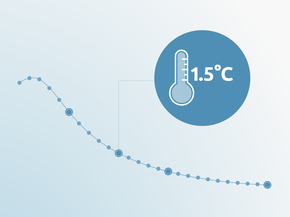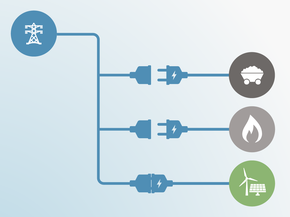Assumptions
Historical data
For historic data, we use data submitted via the Common Reporting Format 2017 (UNFCCC, 2017a) , converted to SAR GWP.
Pledges
Target emission level for 2020 were calculated from 2005 emission data according to Japan’s Second Biennial Report to the UNFCCC (Government of Japan, 2015). We calculated Japan's LULUCF accounting quantities in 2020 for afforestation, reforestation and deforestation based on the accounting rule under the second commitment period of the Kyoto Protocol. Net removal by forests (38 MtCO2e/yr) is taken into account for 2020.
The target for 2030 was calculated using Japan’s NDC and the UNFCCC CRF data submitted in 2016 (UNFCCC, 2017b) converted to SAR GWP terms. Because of this, the NDC emission level quantified in this analysis (1073 MtCO2e) is different from the one in the NDC document, which is based on AR4 GWPs.
Current policy projections
Japan’s Third Biennial Report (Government of Japan, 2017) only provides “With measures” emissions projection, which is the NDC achievement scenario taking into account not only the policy measures already
implemented in FY2013 but also those to be implemented by FY2030. The assumed GDP growth rates are also very high—on average 1.7% per year for 2013-2030 based on the government's growth target (METI, 2015). For the analysis of current policy projections, we used the WEO 2017 Current Policies Scenario (IEA, 2017a), which covers various climate related policies implemented as of mid-2017 and their impact on energy-related CO2 emissions as a basis. The GDP for 2030 assumed in the WEO 2017, based on World Bank and International Monetary Fund estimates, is 16% lower than that assumed in the NDC. We apply the growth rate of that scenario to the last available year of inventory data for energy related CO2. These datasets were combined with the projection for all GHGs other than energy-related CO2 from the Central Environment Council, Ministry of the Environment (MOEJ, 2012a); among various scenarios we took projections from “low mitigation effort scenario – moderate economic growth variant”, the definitions of which - as well as the assumed future economic growth rate - are very similar to those for the IEA WEO Current Policies Scenario. This scenario provides values based on GWPs from SAR. Again, we applied the growth rate of this scenario to inventory data of the last historical year.
The expected impact from the Act on Rational Use and Proper Management of Fluorocarbons (2013) was also considered. Our calculations show that the HFC emission levels to be about 8 MtCO2e/yr higher in 2020 and 22 MtCO2e/yr in 2030 compared to the levels targeted under the NDC (Government of Japan, 2015; MOEJ, 2012b; MOEJ & METI, 2014). For the calculation, we first estimated the total amount of HFCs contained in the end-of-life refrigeration and air conditioning equipment, which is the dominant source of HFC emissions in 2020 and 2030—we divided the NDC target values by the target recovery rate (50% in 2020, 70% in 2030). Second, we estimated the HFC portion in the reference total non-CO2 emissions projections taken from MOE 2012. To do this, the value calculated in the first step is multiplied by the HFC recovery rate assumed in MOEJ (2012a) (60% after 2020 through 2030). Third, we estimated the HFC emissions under current policies: Based on the historical trends reported in METI and MOEJ (2017a), we assume that the HFC recovery rate will not improve over time (40% for 2020-2030) and they are multiplied by the total amount of HFCs contained the end-of-life equipment quantified in the first step. Finally, we quantified the difference between the values calculated in second and third steps. The difference is added to the total non-CO2 emissions from (MOEJ, 2012a). We based our calculations on emission data expressed in AR4 GWPs. The related uncertainty is within the range of uncertainty on the future HFC recovery rate.
The WEO foresees a relatively large share of nuclear energy plants in electricity generation for 2030 (17%). While this is overachieved by the current assumptions of the government (Basic Energy Plan), it is not completely supported by the rate of restart of currently shut down nuclear power plants. We explored high nuclear” and limited nuclear scenarios. For the full nuclear restart scenario, it is assumed that all 25 nuclear reactors (plus one allowed to resume construction) that applied for restart as of February 2018 will be approved and complete their extended 60-year lifetime (with an average 6500 hours/yr operation). The changes in nuclear power generation compared to the IEA WEO 2017’s Current Policies Scenario is balanced by coal and gas power. The ratio of coal and gas power converges to 1:1 by 2030 and the average capacity factor of nuclear power plants was assumed to be 80%. For the limited nuclear scenario, it is assumed that on average only half of twelve reactors that are allowed to restart as of February 2018 after additional safety measures were implemented, plus one allowed to resume construction, will generate electricity until they reach their 60-year extended lifetime (with an average 6500 hours/yr operation), and that no further plants will be reconnected. The electricity supply gap is filled by renewables and fossil fuel power (coal and gas power)—the ratio between renewables and fossil fuel power remains the same as in IEA WEO 2017 and the ratio between coal and gas power converges to 1:1 by 2030.
Further analysis
Latest publications
Stay informed
Subscribe to our newsletter






